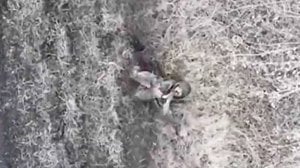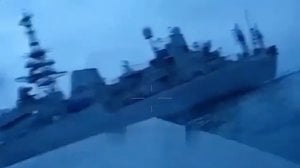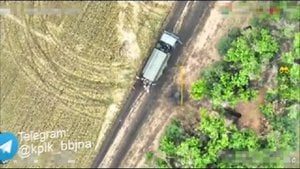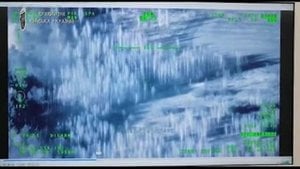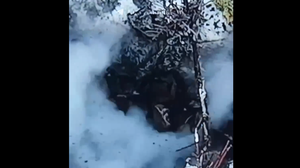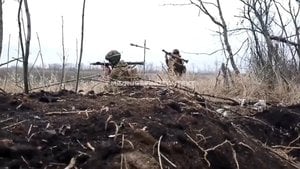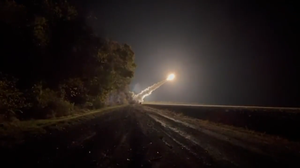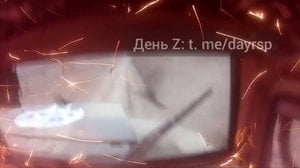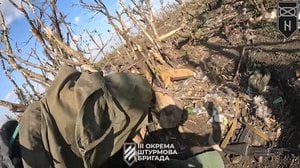
UA Artillery Makes Life Miserable for Russian Infantry
Published 5 months ago
A reconnaissance drone of the Ukrainian K-2 Battalion of the 54th Mechanized Infantry Brigade identifies Russian infantry digging into a tree line and decides to make their lives as unpleasant as possible. The first few rounds are 155mm HE-VT, high-explosive shells with variable-time fuses that cause the shell to detonate at a height of several meters, spraying the ground below with steel fragments. Following the first airburst a close observer can see branches being snipped from trees by the shrapnel. The artillery rounds are followed by a sprinkling of small mortars or AGL fire, which bracket Russian occupiers seeking refuge from the barrage. Once the airburst shells and mortars drive the Russians into defilade with thicker tree cover, the Ukrainian artillery switches to HE-Quick, shells which detonate on impact. The 155mm shells land near the rear of the Russian positions while small mortars work over the area in which they attempted to dig their fighting positions, completing the unmanning of this Russian unit.
This video demonstrates an effective use of shell/fuse combination as well as a ruthless and effective engagement. In the past we have seen examples of Ukrainian artillery targeting Russian infantry with DPICM and I have observed that HE-VT would have proved a better choice against infantry in the open, or with minimal overhead cover. The choice of munition here was appropriate, as was the decision to switch to a point detonation fuse one the Russians moved into the thicker cover. Throwing small mortars and/or grenade launchers into the mix was a nice touch. I was also struck by the patient, predatory method of the engagement. The Russian method is to saturate an area with artillery and rocket fire, but the Ukrainians took their time and delivered precision fires with the appropriate weapons, which rendered the Russian position untenable without wasting ammunition.
About the Author

Cam
Cam served as an infantry officer in the Marine Corps, deploying to the Horn of Africa and participating in combat operations in Iraq. He currently works in the maritime industry and in the defense sector as an instructor of combined arms planning and operations. An avid sailor, Cam founded and directs Triumph Sailing, a nonprofit that supports veterans and first responders through adventure and fellowship on the water. Triumph Sailing just completed its big yearly event, an offshore race in the Gulf of Mexico with an all veteran crew. You can support the mission and next year's sailing season at Tri-Sail.Org.



